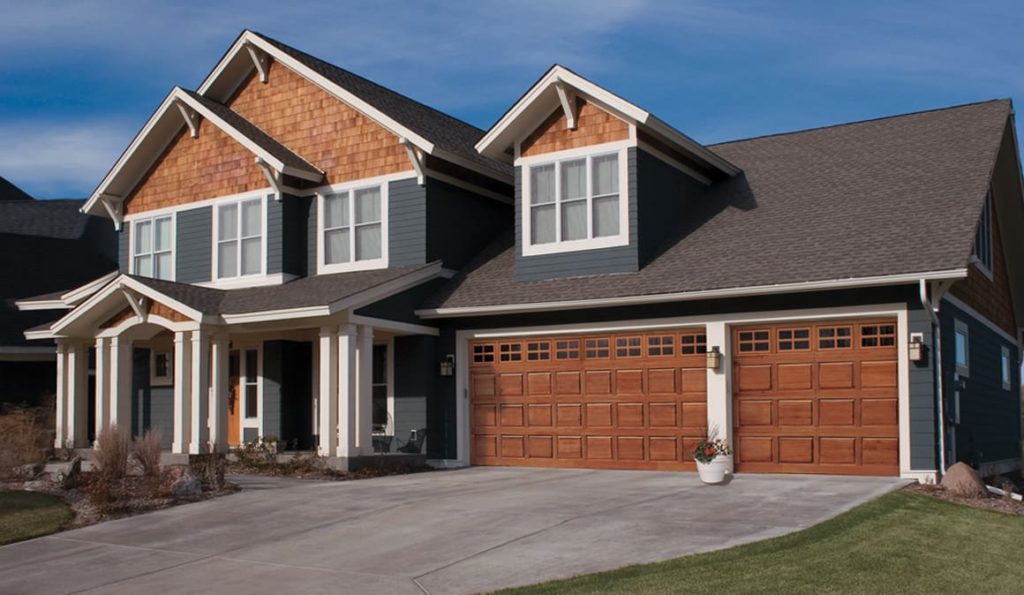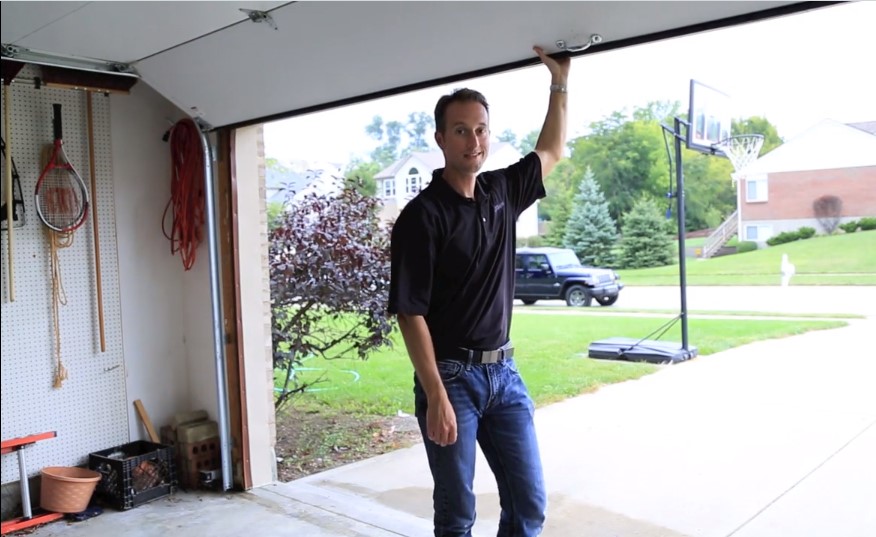The Most Common Problems With Residential Garage Doors
Owning a garage with a quality garage door system can make life so much more convenient. A garage door system is very complex and includes a lot moving parts. Problems arise from time to time even in high-end doors, which is why it helps to have an understanding of what to look for to determine if its time to call a professional residential garage door repair company like Ole and Lena’s.

The first step to troubleshooting garage door problems is a complete visual inspection, which you can perform yourself. Pay attention to the symptoms of your equipment before deciding how to move forward.
It’s a frustrating situation when your garage door isn’t working as it should. It may mean that you’ll have to call a professional to fix it, however, many garage door problems can be fixed without special equipment, so it’s worth checking these possibilities first.

Here are some potential reasons your garage door won’t close plus solutions you can try that may solve the problem.
1. The Transmitter Battery Is Dead
The transmitter sends the signal to your garage door to tell it to close. If it’s dead, it can’t send the signal, so the door won’t move.
Solution: Test all of the garage door transmitters inside your garage and in your vehicles. If the transmitters in your garage work but the one in your car doesn’t, for example, you need to replace the batteries in your car transmitter. Remove the transmitter door and replace the batteries. Test it again to make sure it works.
2. The Photo Eye Is Blocked or out of Alignment
Photo eyes are installed on the sides of the garage door and send an invisible beam across your garage. If any items or people are in the way of the beam when the door prepares to close, the door will stop in place to prevent injury and damage to property.
Solution: Make sure there are no objects disturbing the beam of the photo eyes. If the door still won’t close, clean the lenses with a soft cloth and streak-free cleaner. If that doesn’t work, make sure the eyes are aligned. If they’re not pointed in the same direction at the same angle, they cannot communicate. Use a leveler to make sure the eyes are the same height off the ground and pointed directly at each other.
3. The Door Track Is Misaligned
If you hear a rubbing noise when the door opens and closes or see gaps between the rollers and the rail or bends in the rails, the door is off its track.
Solution: If the door still moves, you can try realigning the track yourself. Loosen the screws that hold the track to the frame. Use a rubber mallet to move the track to the right place. Then, tighten the screws so the track can’t move again. Repeat these steps on the other side. If the alignment is the issue and the door won’t move at all, you’ll need to call a professional.
4. The Disconnect Switch Is Enabled
If you can hear the garage door motor running but the door isn’t opening or closing, the disconnect switch is likely the issue. This switch is in place so that you can manually move your garage door in case the power goes out.
Solution: If you’re able to do so, open the door manually and reattach the hook to the motor. You may need a stepladder. Afterward, test the door again.
Other common troubleshooting steps includes the following:
- Unreliable or unresponsive garage door opener: Make sure the remote has fresh batteries and that the system has enough silicone-based lubricant for smooth movement. If you have to apply some, remember to wipe off excess. If the opener still doesn’t work, call an expert. In the meantime, you might be able to manually operate the door, but take care and always have help.
- More noise than usual: Excess noise from your garage door during opening and closing can come in several varieties like screeching, grinding or squeaking. A common cause is lack of lubrication on the parts that need it, like rollers and their tracks. Solve the issue by applying lubrication directly to whatever part seems to make the most noise.
- Cracks or gaps in the door or sealant: If your garage door is made of wood and the cracks are in the door itself, caulk them with a waterproof filler or sealant. If the weather sealants are cracked or broken — which happens naturally with age — find a replacement weather sealant at a local home improvement store or ask a reliable professional to remove the old one and install a new one.
- Unsmooth or incomplete movement: If your door has come off its hinges, you should call the experts. Garage doors weigh hundreds of pounds and could seriously injure someone. If your door opens without prompting immediately after closing, you could have a problem with the alignment of your photo-eyes. Make sure the small plastic devices on each side of the door align with one another.
- One loud bang: While this issue could be a broken cable, the most common explanation is a snapped spring. Another symptom is the door slamming shut. Whether it’s a torsion or extension spring, the solution is a little more complicated with this problem. Springs pack tremendous pressure, which means you could cause damage or injury trying to fix or replace them without experience. Again, call a professional at Ole and Lena’s.
How to Fix a Slow Opening Garage Door
If you’ve noticed your garage door isn’t opening as quickly as it once did, there are a few steps you can take before calling a professional.
How Quickly Should a Garage Door Open?
When you’re trying to determine how quickly a garage door should open, you’ll discover there isn’t one fixed answer. That’s because garage doors fall into two broad categories: commercial (or industrial) and residential.

In general, residential garage doors should open at a rate of about seven inches per second, or about 12 to 15 seconds to open all the way. Industrial-grade garage doors can open much faster, which is reflected in their higher price tags.
Steps for Fixing a Slow Garage Door
Even if you’re not the handiest person, you can still do a few things to fix a garage door that opens slowly. The first thing you can try is adjusting your garage door’s speed setting. In some cases, you can find the switch for the speed setting on your door’s opening mechanism. To locate the switch, remove the opening unit’s housing. Many new garage door openers are preset to the lowest possible setting. If that’s the case with your opener, you can adjust the setting simply by using a screwdriver.
If adjusting the speed setting doesn’t increase the speed of your garage door, there’s more to do.
Many garage doors open slowly because they need lubrication. The more you use your garage door, the more wear its pulleys experience, which causes them to lose their lubrication. Your springs will lose their tension as well, resulting in your door opening even slower.
The experts at Ole and Lena’s know the exact product to use to lubricate the track, brackets, and hinges on any kind of garage door. And they can diagnose and fix any issue that’s causing your garage door to open slowly.
Need Some Help?
If you’re not exactly sure what’s wrong with your garage door, the solution you try doesn’t work, or you know it’s a problem a professional should look at for your safety, choose Ole and Lena’s. The convenience and safety of our customers is our top priority, which is why we’re available 24/7/365 to solve any issues you have. Contact us today to get your door back up and running.








